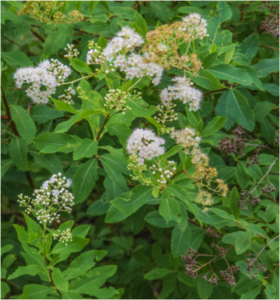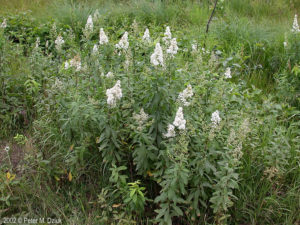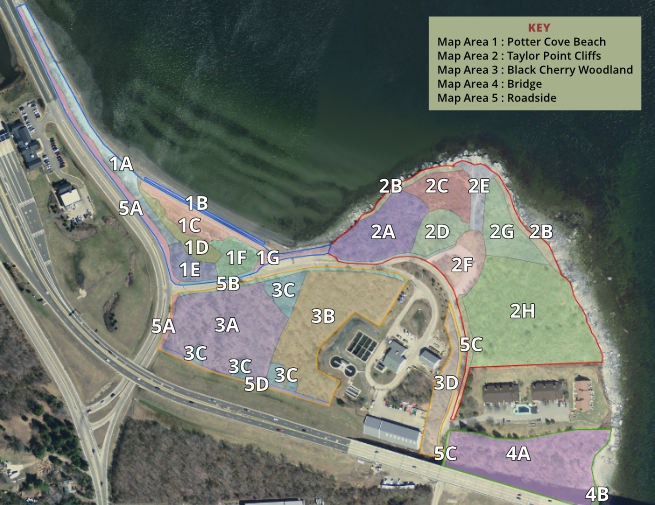Common Name: White Meadowsweet
Specific Name: Spiraea alba (Spiraea latifolia) (Spiraea alba var. latifolia)
Known Occurrence at Taylor Point:
Map areas: Beach 1G
Category: Native, Shrub

Ecological Considerations:
Spiraea alba, commonly called Meadowsweet, is a mounded, 1-6 ft. shrub with numerous, fine-textured, erect, unbranched stems. The bark is smooth, grayish to reddish brown eventually peeling off in fine strips.The leaves are alternate, simple, finely serrated, elliptical, 2 inches long, green above, paler below turning golden-yellow in fall. Tiny white or pinkish flowers are arranged in elongated, terminal spikes appear in mid-summer.
Map areas where this plant can be used for revegetation:
Propagation Mechanisms/Strategies for Encouraging its Establishment:
Best Planting Practices/Options and Pros and Cons of Options:
White Meadowsweet grows in average, medium to wet, well-drained soil in full sun to part shade. It prefers full sun, needs constant moisture, and it’s soil must not be allowed to dry out.
Key Issues Regarding its Ecology ( e.g. Which Invasives Threaten it, What Conditions Favor it)
Associated Ecological Benefits:
White Meadowsweet attracts butterflies.
Availability of Locally Sourced Seeds and Plants:
Case Studies of Native Plant Establishment Efforts/Lessons Learned:
Additional photos:


Sources cited:
Missouri Botanical Garden
Go Botany
Key Words:
Native
Shrub
Non-Invasive
White Meadowsweet
Spiraea alba
Spiraea latifolia
Spiraea alba var. latifolia
